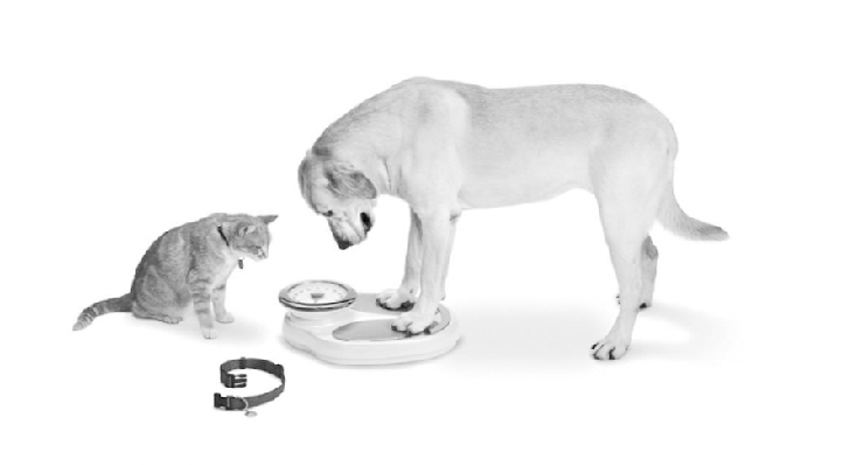In Cats & Dogs
Obesity, like in humans, is a troublesome trend in our furry friends. In fact, according to a recent report, 37 percent more dogs and 90 percent more cats are overweight than they were five years ago. Arthritis has also increased significantly in the past five years, by 38 percent in dogs and 67 percent in cats. Part of this increase may be due to pets’ expanding waistlines. (Remember PG readers, no pet gets fat by itself!) Almost half of dogs with arthritis and nearly 40 percent of cats with the joint disease are also overweight, and there is a similar link between diabetes and high blood pressure in pets that are also overweight.
So what can owners do? Like in humans, prevention and early detection are key to keeping pets healthy. The key to successful early disease diagnosis involves a partnership between pet owners and their veterinarian to identify changes in a pet’s overall health and behavior. Keep in mind that an exam every six months for Fido is like getting checked out yourself every three and a half to four years… They age a lot faster compared to us!
Dental Tartar – A little tooth buildup is the most common diagnosis when a dog or cat is taken to the vet, according to the report–it’s even more common than getting a clean bill of health. (See the accompanying feature on National Dental Month, page 20.)
Overweight – As we get busier, a lot of owners don’t have time to spend with their pets, and so they show love by giving the pet an extra treat. And, just like we misperceive our own weight, owners’ perceptions of their pets’ weight play an important role in the problem. Today, almost 20 percent of mature adult cats and dogs, almost 15 percent of geriatric dogs and cats and almost 10 percent of young adult dogs and cats are overweight.
If you think your pet might have a weight problem, the first step is to measure how much food you give him or her. Some bags make it look like you should feed that amount twice a day. Common sense should help. So many weight issues have been addressed by just serving half the amount.
You also don’t need to reward a pet with a treat–there is a thing called a hug that actually works better sometimes. And cutting back on unhealthy table scraps can also help. If those methods don’t make any difference after a month or so, it’s time to look for underlying health problems and complications of being overweight, like diabetes and hypothyroidism.
Ear Infection – Ear infections are more common in dogs than cats, but still one of the more common feline diagnoses. The best way to prevent problems is to clean your pet’s ears frequently. Dog and cat ear canals are much longer than humans, so the waxy buildup that naturally migrates can get stuck. Ear infections can also be caused by parasites or bacteria, or by a particular breed’s love for swimming.
A vet can recommend the best cleaning solution, whether it’s a generic anti-wax cleaner or something to fight specific bacteria, as well as show you the best way to hold your pet while you’re cleaning their ear.
Cats: Eye Infection – Everything from a scratch to an ulcer to allergies can cause eye problems in cats, says King. Seven percent of juvenile kitties, 4 percent of young adults and 3 percent of mature adults are diagnosed with eye infections. Older cats may even present with cataracts, she says.
Dogs: Nuclear Sclerosis – Older dogs are also often diagnosed with this aging-related eye condition, which appears similar to cataracts, but does not affect a dog’s vision as seriously.
In fact, nearly 20 percent of geriatric dogs and more than 2 percent of mature dogs experience it.
While no treatment can reverse the effects, because vision is typically only lost at a very advanced age, vets recommend simply giving good care to a dog with nuclear sclerosis, which includes not making too many changes to the dog’s environment.
Cats: Malaise – More than 8 percent of geriatric cats are diagnosed with what’s called malaise in the report, or an over-arching change in temperament that may be similar to depression. Pets can experience true depression, like grief over the loss of another pet, and there are animal behaviorists who can diagnose these disorders. But an underlying physical disease is likely be the cause.
If your pet doesn’t feel like moving around, for example, it could be arthritis. Their overall demeanor is different just because they’re ill.





